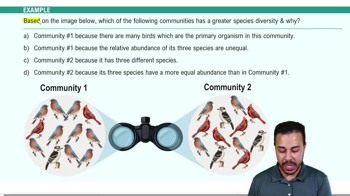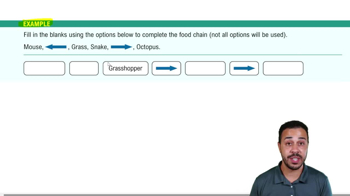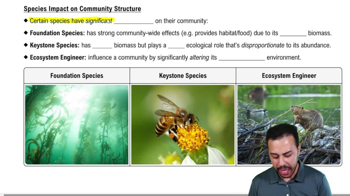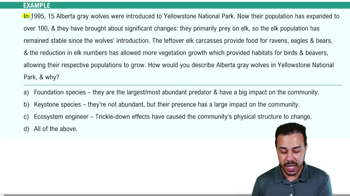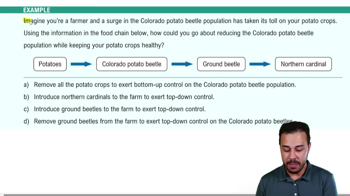Interactions between organisms in a community can affect that community structure. One way this can happen is with facilitation where the presence of some earlier species makes conditions more favorable for a later species. In fact, we'll see this with what are called pioneering species, which are the first hardy species to arrive and colonize during a primary succession. These species are going to help develop soil for later organisms. They'll include organisms like lichen, moss, shrubs, and various weeds—all common pioneer species.
Some less positive interactions are tolerance, where existing species just don't affect the subsequent species that arrives, and inhibition, where the presence of one species will actually prevent another species from forming. Here, I just want to show some pioneering species moving into this hardened lava flow in an example of primary succession. And behind me, we have an epiphyte. This organism is living on the surface of this tree. So, in a sense, this tree was providing facilitation. It essentially made the conditions favorable for this later species, this epiphyte, to arrive.
Now, I want to briefly take a look at a great example of primary succession, which occurred in Glacier Bay in Alaska. You can see sort of an aerial view of this location behind me, and basically what happened is a rapid glacial retreat over the past 200 years exposed this area and led to primary succession. The recently uncovered areas are just going to have pioneer species. You can see an example of that here. Now over time, small shrubs called dryas are going to inhabit the more developed areas. You can see that happening here, and then they will be replaced by alder, which you can see here. Then, spruce trees will move in, and eventually, these areas that are developed with spruce trees will allow for hemlocks to arrive, forming these spruce hemlock forests.
Actually, some of these areas in Glacier Bay are not going to stay hemlock spruce forests. They're actually due to the acidity of the sphagnum moss that is found there; they're actually going to turn into ponds and bogs—not everywhere, just some of the areas. So with this, hopefully, you can see an example of primary succession and how it moves through these various stages. With that, let's go ahead and flip the page.








